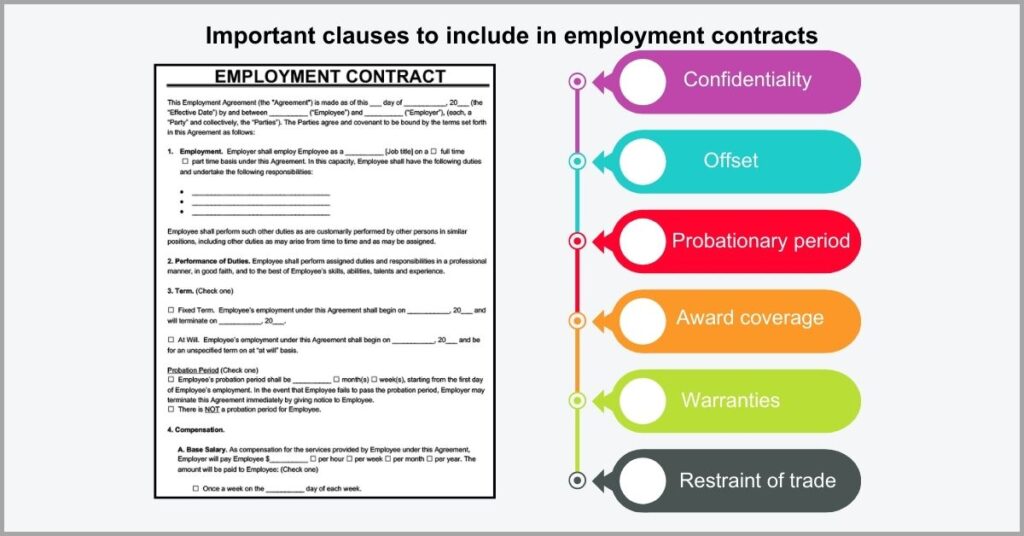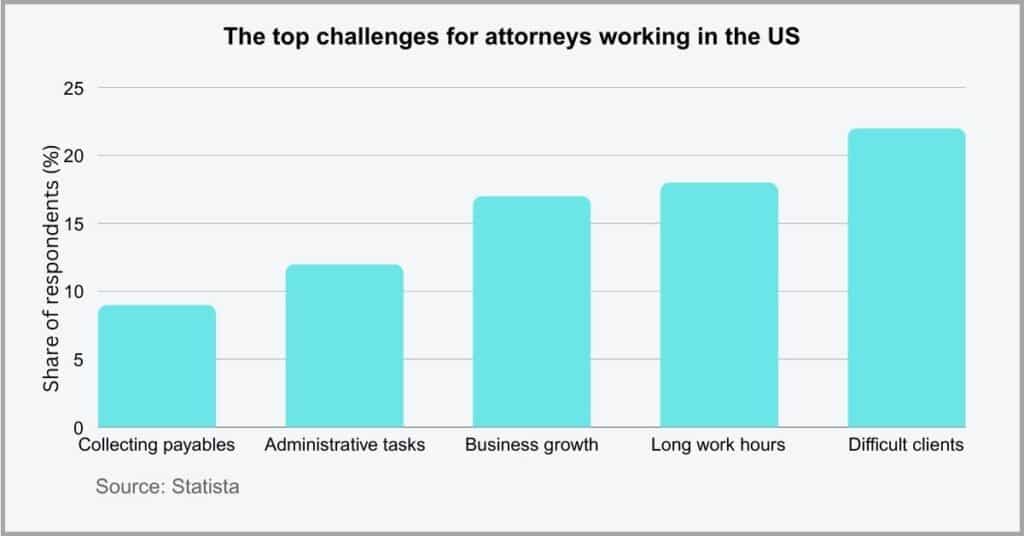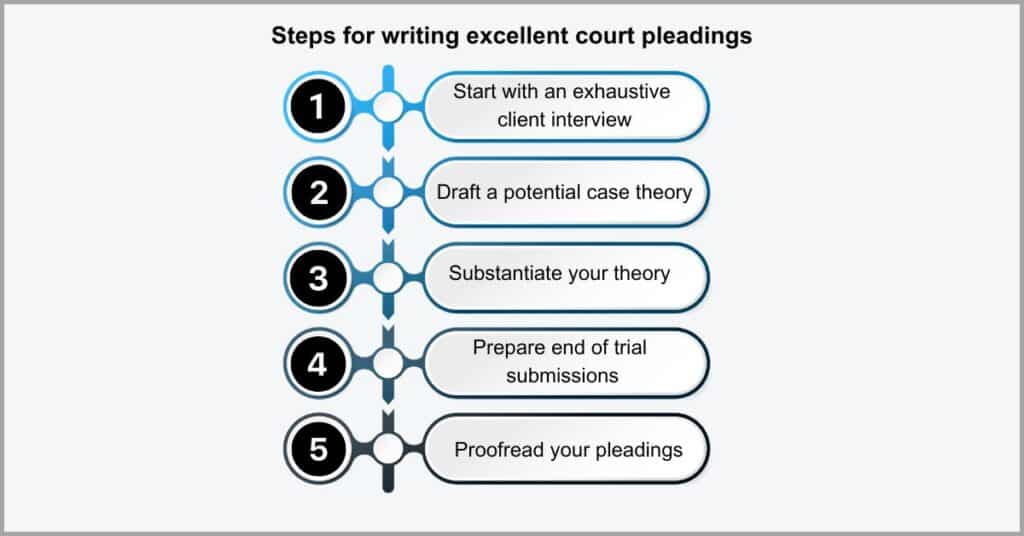10 Essential Legal Documents for Small Law Firms to Manage in 2025

Want to improve case outcomes for your practice?
Creating appropriate documentation and keeping your files organized can help.
When documentation is poor, case management becomes ineffective, and cases can take too long to close while chances of getting favorable outcomes reduce.
A BigHand survey revealed that 35% of law firms prioritize effective document creation. They see it as pivotal in improving case outcomes.
If you’d like to follow in their footsteps, you need to learn about the different types of legal documents in a law firm. These range from both client and practice documents that you need to secure for efficient operations.
By understanding your firm’s document needs and learning to create these records more accurately, you’ll also improve your practice’s reputation and productivity.
If you’re open to growing and sharpening your expertise in property law, check out this article I wrote about important real estate documents to have.
In this article, we’ll discuss essential legal documents for small law firms to manage in 2024 so that you can run your legal workflow more effectively and profitably.
Let’s get started.
1. Client intake form
So what is a client intake form?
A client intake form is a document that you use to gather important information about your client in order to understand how to assist them.
When you have insufficient data about clients, the onboarding process becomes very poor, making it difficult to establish a strong professional relationship.
A survey by Wyzowl revealed that 90% of customers believe there’s massive room for improvement when it comes to legal onboarding processes. So it appears that businesses are missing the mark in this regard.
Client intake forms are one of the most important types of legal documents in a law firm because they can help you improve onboarding.

When it comes to creating an attractive client intake form, I recommend including a welcome message that introduces your brand. You should also ask for contact information, background data and the nature of services they need.
However, client intake forms can quickly pile up, creating a messy document workflow, so I recommend using a digital document management solution.
Why not get started with your free FileCenter trial today? Our software offers automated OCR scanning that enables you to digitize client intake forms, and even create a standard template that clients can conveniently fill online.
That said, remember to keep your client intake form short by only asking for important basic information to avoid overwhelming them and to ensure form completion.
2. Client engagement letter
An engagement letter establishes vital ground rules.
It defines the scope of the work, in terms of the extent or duration of services that you’ll offer, and also discusses various other terms for the working relationship.
Without engagement letters, clients may have unrealistic expectations about your services, attracting the risk of scope creep that wastes your resources.
A study by PMI discovered that 52% of projects experience scope creep. For your small law firm, that means that almost half of all dealings going beyond their scope, resulting in a lot of uncompensated work.
It is for this reason that client engagement letters are one most essential legal documents for law firms.

So what are the critical elements of a client engagement letter?
First, it should identify all parties and their legal names. It should also contain scope of services to ensure that the client understands what services they’ll get from you.
I recommend using the best legal document management software to backup engagement letters so that you can easily reference & share them in case of disputes.
Aside from your work and obligations as the law firm representing the client, it’s also crucial that you describe the client’s responsibilities. Finally, it should also clearly define deliverables as well to provide evidence of the work that you’ll perform on their behalf.
3. Paralegal invoice
Cash flow is the lifeblood of your business.
A healthy flow of finances enables you to keep the lights on, take on new cases and even expand and venture into new practice areas if that’s a priority.
However, without an effective way to document and collect payments, you may not get paid in time, while compensation may also be inaccurate.
A survey by MyCase revealed that 84% of law firms turned to electronic invoicing solutions to get around challenges like inaccurate and untimely payments. This makes paralegal invoices one of the most essential legal documents for law firms.
But how do you create effective paralegal invoices?

Your invoice should capture clear and elaborate details about the type of service you provided, its date, and the total amount of time spent on this task. This makes it easy for you to calculate your billable hours and total fees more accurately.
In turn, it reduces the risk of payment disputes with your clients, helping you get paid on time and also improving bookkeeping processes for your small law firm.
Beyond appropriate remuneration, invoices are also necessary to help you calculate your taxes and improve compliance. In order to ensure you don’t lose these vital documents, make sure to create backup copies and store them in the cloud.
4. Non-disclosure agreements
Why should you use non-disclosure agreements?
In order to enable employees to do their jobs, you may need to give them access to important information such as your client list. However, if they leave for another law firm, there’s the risk that they could disclose this information to their new employer.
With non-disclosure agreements, you can preserve confidential information to prevent ex employees from stealing your clients or using your strategies.
A study by HBR showed that at least 1 out of 3 employees are bound by a non-disclosure agreement or NDA. Businesses that use them said it was necessary to preserve confidential information that gives their companies the edge.

When creating these types of legal documents in a law firm, you need to describe the scope, in terms of the specific information you’d like to protect. Alternatively, you can include a catch-all clause to cover all your bases.
However, creating each NDA from scratch for every employee or client can be a lot of work, so I recommend using small business document management tools to create a template, which you can quickly rework to match the needs of each person.
In case you want to exclude certain confidential information, so that they can be shared according to the nature of the situation, you can include exclusion clauses too.
5. Marketing documents
Marketing is an important part of running your firm.
It’s an essential process to help you raise awareness about your law practice, enabling you to stand out and also build trust and familiarity in the industry, especially when you’re just starting out.
Without the right marketing materials in a highly competitive legal industry, you’ll struggle to attract clients and keep your small law firm profitable.
A survey by the ABA revealed that 58% of law firms and solo attorneys use various marketing strategies to promote their business. In fact, many of them even plan to increase their investments into these tactics because of previously successful initiatives.

So what marketing materials do you need for your firm?
There are quite a number but some common ones include brochures, which are documents that advertise your services in a visually striking document. Others also include business cards which can help you stay on top of customers’ minds.
Creating printed marketing materials can really cost a small fortune for your law firm, so I recommend using paper-less document management solutions to lower your costs.
Eliminate printing expenses by beginning your free FileCenter trial, which will allow you to digitize marketing materials & draft beautiful documents using PDF editing features like annotation, resizing and cropping, among others.
6. Retainer agreements
A retainer agreement is commonplace in legal workflows.
It is a long-term contract between a lawyer and a client securing legal services of the attorney, and defining compensation and other terms of the working relationship.
As a small law firm, generating and keeping new clients can be tough, and retainer agreements go a long way to ensuring steady work for your business.
It’s alarming to note that 75% of small law firms and solo attorneys said acquiring new client business is the biggest challenge they face, according to a Thomson Reuters study. Some of them even had to close shop primarily because of this issue.

Of course, you need to provide stellar client experiences and deliver results to attract and keep clients, but retainer agreements can help.
They are one of the most important types of legal documents in a law firm because they can reduce client attrition by also defining terms and conditions for parting ways.
Creating and managing agreements can help you establish strong long-term relationships with your clients, enabling you to address their changing needs. I recommend using cloud-based document management to back up these files.
This way, you can have key copies that you can access & reference at any time, and even share them with clients and colleagues very easily to streamline collaboration.
7. Employment contracts
Why are employment contracts important for your firm?
These are legally-binding agreements that define the terms of the working relationship, and even help to keep employees from disclosing your law firm’s secrets & tactics.
Additionally, with talent retention a top struggle for most legal workflows, employment contracts also help you improve staff experiences and retention.
A study by the Canadian Bar Association established that 81% of law firms struggle with retaining top talents for their organization. While a combination of long work hours & high-pressure environments are largely to blame, poor documentation also chips in.
So well-drafted staff contracts that address employee well being are among essential legal documents for law firms with excellent retention rates.

In order to draft effective staff contracts, you’ll need to add confidentiality, offset, probationary and warranties clauses, among others depending on your needs.
That said, employee contracts will grow quickly as your business expands and it’s therefore important to use digital solutions that can easily scale with your needs.
In order to accelerate growth, consider starting a free FileCenter trial, to create a scalable document workflow for handling employment contracts. Our software can match your expanding document management needs very cost-efficiently.
In addition, it facilitates regulatory compliance by enabling long-term record retention, allowing you to stay compliant with HR laws and various other industry regulations.
8. Client notes
Difficult clients are part of the business.
You may already have them governed by contracts and agreements, but these aren’t always enough to stop loose canon clients from saying one thing & doing the opposite.
Without official legal documents that substantiate decisions, difficult clients can dispute past agreements and you may not be able to hold them accountable.
Unfortunately, at least 22% of US attorneys said that dealing with difficult clients was the biggest challenge in their job, according to a survey by Statista. It’s a problem that ranked way above other issues like long work hours and growing their business.
It’s because of this that client notes are essential legal documents for law firms to keep.

So what are client notes exactly?
Well, these are documents that record client conversations, helping to provide written evidence about earlier discussions. In case a client disputes a past decision, you’ll always have a reference for keeping them true to their word.
If you’d like to make client notes even more foolproof, I recommend reviewing them with your client after each meeting and having them sign it. For this purpose, you should consider the best NetDocument software alternatives for efficient e-signing.
These tools also make it easy to digitize and version your client notes, streamlining reviews and tracking when you’re working several cases simultaneously for your firm.
9. Court pleadings
What’s the purpose of court pleadings?
These are one of the most essential legal documents for law firms that often kickstart the claimant’s grievances or offer a response to a party that filed an initial pleading.
When pleadings are poorly written, you open up your case to misinterpretation because it becomes very challenging for the jury to understand your reasoning.
A study by The Guardian revealed that 2 in 3 jurors struggle with grasping legal instructions and proceedings. The situation only gets worse with ineffective court pleadings, which hurt the chances of getting the legal outcomes you desire.
So it’s important to know how to write bulletproof court pleadings that are easy to follow.

The first thing you may do when drafting pleadings is to take instructions from your client via a comprehensive interview. While you should consider this input, it’s crucial to test it independently rather than pleading your case only on what your client tells you.
In order to improve legal document management, I also recommend preparing an “End of Trial Submissions” from the onset. This should just be a rough draft that will help you understand the needs and direction of your case.
Last but certainly not least, don’t forget to be precise and proofread pleadings before filing, so that you don’t give your opponent a chance to misstate your argument.
10. Partnership agreements
Partnerships are an important success enabler for your law firm.
They bring together diverse ideas and creativity, while allowing your business to benefit from industry expertise and even pool resources and share various risks.
However, when not well defined, partnerships can quickly turn into disaster, with each party pulling in different directions, thereby complicating decision-making.
A survey by LexisNexis discovered that 49% of law firm leaders reported associates are less interested in becoming partners than in previous years. So the partnership model is losing popularity, primarily due to how challenging they are to manage.
That’s where partnership agreements come in, enabling you to define terms and lay the ground rules for harmonious co-existence.

But how do you create an effective partnership agreement?
These are different from other important contract documentation you may manage for your clients like business agreements. More specifically, the difference lies in that they’re bound by ethical frameworks and the rules of professional conduct.
Aside from ethical requirements for each party, other key components include a definition of capital contributions and ownership structure as well. These are key to clarifying financial communications & ownership to avoid misunderstandings.
These types of legal documents in a law firm are very crucial because they also define profit-sharing agreements to ensure you’re all compensated as per your contributions.
Conclusion
Your law firm handles sensitive documents.
So it offers a rich source of personal & corporate data, making it appealing to hackers.
When your law firm can’t protect important documents, you may experience data breaches that lead to leakage of case strategies and loss of client trust.
Unfortunately, a PWC survey determined that 90% of top law firms are concerned about data breaches and the growing threat of cyber attacks. But these threats to document safety can also come from within.
If you’d like to protect your business and its clients, you need to take steps to secure essential legal documents for law firms. A great document management solution is instrumental to this end.
In order to protect legal documents, start your free FileCenter trial. Our software offers advanced permission control, e-signatures, a client portal and other vital features to help you improve document security for your small law firm.


